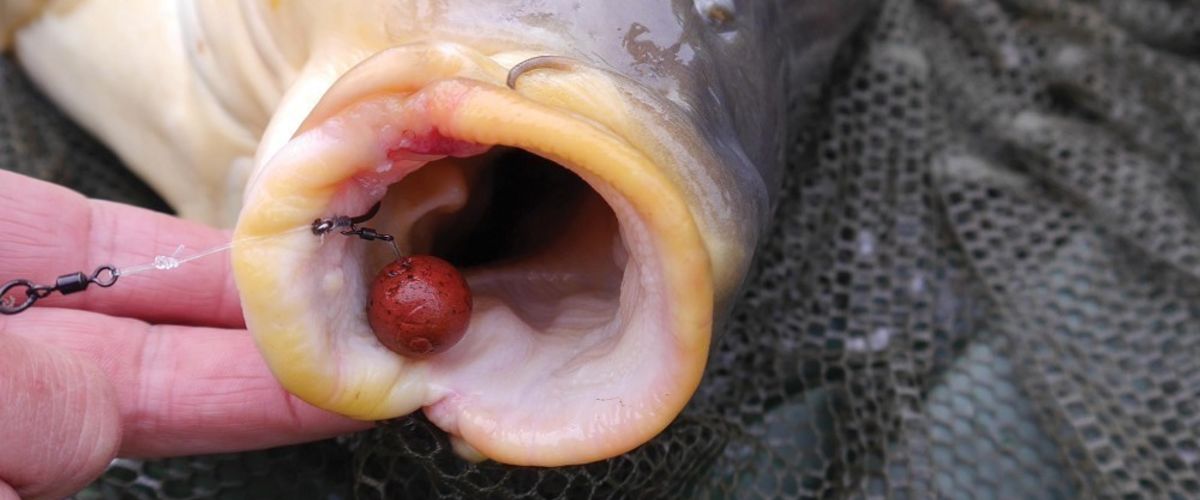
The Reverse Combi Rig under the microscope
Sometimes the best way to move forwards is to head in reverse...
This month we’re going to talk about combi-rigs but I’m going to put the Reverse Combi under the microscope, as it’s a rig that’s gained a lot of popularity in recent history.
I have lost count of how many ‘Hinged Stiff Rigs’ I’ve seen tied with a coated hooklink boom. Sorry, chaps, but so long as Terry Hearn has got hair on his head that isn’t a true Hinged Stiffy! The softness of the coated braid, the missing loops – it’s just not a purist’s version. That doesn’t mean to say it isn’t any good, though. Because trust me, it is!
The Chod Rig, I believe, has popularised the Reverse Combi Rig. People are so confident in that stiff hook arrangement that it’s almost a total mind-f*ck to use a rig that’s any different. So almost everywhere you look, someone is chucking out a nicely tied Reverse Combi with either supple braid or a bit of coated braid behind it.
It makes sense, too. The hook remains stable at all times. By that, I mean it isn’t able to fold over on itself and go out of a carp’s mouth backwards. It’s the Tim Paisley ‘point X’ all over again, only your rig is working on the way in, not the way out. I have referred to this previously and it’s basically the point at which the two materials meet. Once the stiffer part of a standard combi is in past the carp’s bottom lip, it’s hard for it to come out the way it came. With the stiffer part of a Reverse Combi it goes inside the carp’s gob in a more ‘prone’ position. In short, you are giving your Chod Rig a supple boom, which works a treat for balanced pop-up rigs, settling your rig over light weed or detritus really nicely.
My good friend and fellow Avid Carper Ian Russell has been using something he calls the ‘Flick Rig’ and since hearing him explain how many bigger fish it’s caught him over his usually standard combi-rig, I’m totally sold. He actually uses a Longshank hook, D-rigged on a short section of Captive Stiff Filament, with a small loop connecting to a swivel. Behind this he uses the super-supple Pindown material which is made from PTFE fibres that sink like a brick. He caught from the off using it at RK Leisure’s Horton Church Pool, and his results from Kingsmead this autumn were mesmerizing.
I personally believe that Reverse Combis are better when the stiffer part is almost as long as the supple part. It’s very easy to make the supple boom too long and make life too easy for warier carp that are feeding very slowly and cautiously. Before they connect with the weight of a semi-fixed lead, your rig has fallen out and they’re onto the next lump of boilie!
Where Reverse Combis really come into their own is over a softer lakebed and I prefer a ‘wafter’ style hookbait for this. In my opinion, pop-ups are still used by the majority of anglers which gives me all the more reason to use something else. The wafter also lends itself to being presented on a running swivel behind a hookbead, or on a ‘D’ rig. I’ve not experimented much with tying the Hair from a stiff material, but I know people have done quite well using stiff Hairs.
Like with all things in carp fishing and with carp fishing rigs, it’s a rig that’s well worth looking at when everyone else is using something different. I know loads of anglers who use the Reverse Combi Rig almost exclusively; they use it for a reason!
Hookbait tip:
Over the decades, numerous ways of attaching your pop-up have gained column inches within the angling press, but this method, commonly known as ‘The Blobbing Method’, is, simply put, the best way. (1) Pass a short length of floss or stiff hooklink material through the micro hook swivel; (2) thread the pop-up onto the bait floss; (3) push the hookbait onto the micro hook swivel; (4) burn the tag ends with a lighter; (5) compress the molten tag ends against the hookbait; (6) and it’s job done.






